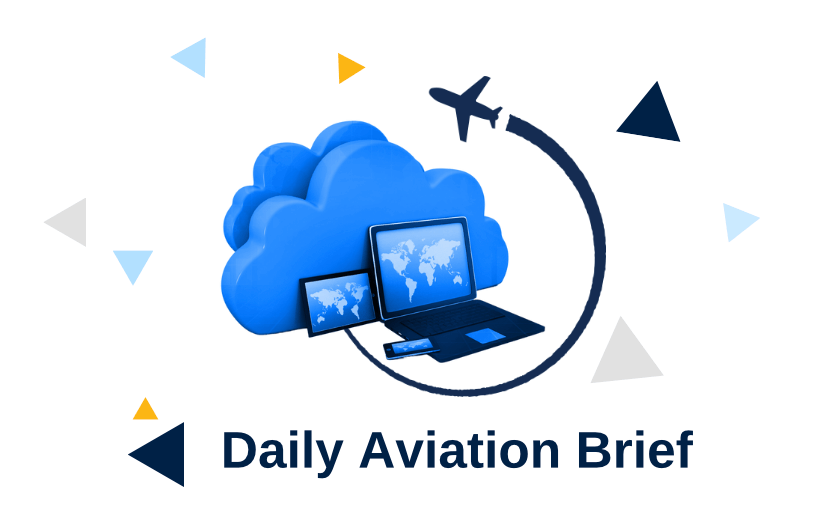




31 Oct 2025
Beyond the Transaction: Building Lasting Partnerships in Aircraft Leasing
Every aircraft lease starts with a signature, but what really holds it together isn’t the paperwork, it's the people behind it. In a business driven by precision, data, and dollars, trust and transparency often determine success long before the first payment is made or the jet leaves the hangar.
Aircraft leasing has evolved from being purely transactional to deeply relational. The reason is simple: leases today last longer, span multiple jurisdictions, and involve teams who must work together through unpredictable markets and regulatory shifts. Technical expertise and financial discipline are essential but they’re no longer enough.
When lessors and airlines trust each other, problems turn into discussions instead of disputes. When communication is open, redeliveries go smoother, and decisions move faster. And when collaboration replaces competition, both sides protect value not just for the current deal, but for the next one too.
This shift towards a people-first mindset isn’t a trend; it’s a competitive advantage. The lessors who invest in relationships, not just assets, are the ones building partnerships that last far beyond the transaction.
What Role Does Trust Play in Long-Term Leasing Partnerships?
Trust is the foundation of every lasting partnership in aviation leasing. Without it, even the most detailed contract can collapse under pressure. With it, complex deals can survive market shocks, delays, and disagreements.
At its core, trust is built on integrity and consistency. Lessors who keep their word, deliver on time, and communicate openly earn confidence from their airline partners. Airlines, in turn, show reliability through timely payments, proper maintenance, and full transparency about operational realities. Each act of follow-through reinforces the partnership and strengthens the groundwork for future deals.
In leasing, trust often determines how problems get solved. When an aircraft faces an unexpected maintenance issue or when markets shift suddenly, the reaction of both sides defines the outcome. A relationship built on trust leads to collaboration not confrontation. Instead of pointing fingers, both sides work together to find flexible solutions that protect the asset and the business.
There’s also a financial dimension to trust. Airlines with a strong track record of reliability often secure better lease terms, lower reserves, and faster approvals. Lessors who act fairly and consistently become the first choice when airlines plan fleet expansions or sale-and-leasebacks. In other words, trust compounds just like capital.
In a market where aircraft change hands but reputations don’t, integrity remains the most valuable currency a lessor or airline can hold.
How Does Transparency Build Confidence Between Lessors and Airlines?
Transparency turns good partnerships into great ones. In aviation leasing, it’s the difference between guessing and knowing between working in isolation and working together. When lessors and airlines are open about data, maintenance schedules, and financial terms, they replace uncertainty with confidence.
Transparency begins with information sharing. For lessors, this means clear reporting on asset condition, maintenance records, and billing breakdowns. For airlines, it means timely updates on aircraft utilisation, performance, and operational challenges. When both sides have access to the same facts, decisions become faster, disputes fewer, and trust deeper.
Technology now plays a major role in enabling this openness. Blockchain-based documentation systems and shared digital dashboards are helping eliminate ambiguity in everything from maintenance tracking to lease payment history. Instead of relying on periodic check-ins or manual reports, both parties can see real-time updates of a single source of truth.
Transparency also builds accountability. When costs are clear and communication is consistent, lessors can justify charges, and airlines can plan budgets with confidence. This clarity reduces tension, especially during redeliveries or mid-lease audits, where misunderstandings can otherwise turn into major financial disagreements.
Ultimately, transparency doesn’t just protect data it protects relationships. In a business built on long timelines and large investments, clarity keeps both sides aligned and moving forward with confidence.
Why Is Collaboration More Valuable Than Contract Terms?
Contracts set the rules, but collaboration decides the outcome. In aviation leasing, a well-written agreement can only go so far; it's the day-to-day cooperation between lessors and airlines that keeps things running smoothly.
Collaboration starts when both sides see each other as partners, not opponents. Instead of waiting for problems to arise, they work together from the beginning planning maintenance schedules, aligning redelivery timelines, and preparing for operational changes well in advance. This proactive approach doesn’t just reduce downtime; it helps both sides save time, money, and goodwill.
For example, when an airline faces a short-term route adjustment or operational delay, a collaborative lessor doesn’t rush to enforce penalties. They evaluate the situation, understand the airline’s challenge, and look for a solution that protects the aircraft while keeping the airline operational. The goodwill built in such moments often leads to longer partnerships and smoother negotiations in the future.
Collaboration also strengthens technical and operational coordination. Joint planning around shop visits, spare engine swaps, or component upgrades ensures that maintenance events are predictable, well-documented, and compliant with lease return conditions. That means fewer surprises and fewer costly disagreements.
In an industry where relationships often span decades, collaboration delivers something no contract can guarantee: continuity. It creates an environment where both lessor and lessee grow together, balancing commercial success with shared responsibility.
How Does Emotional Intelligence Shape Successful Negotiations?
Behind every leasing negotiation is a mix of numbers, pressure, and personalities. The best outcomes don’t just come from who has the stronger position they come from who understands people better. That’s where emotional intelligence (EI) makes the difference.
Emotional intelligence in leasing isn’t about being agreeable; it’s about being aware. Lessors and airlines that listen actively, read the room, and understand the motivations of the other side often find faster and more creative solutions. Deals move forward not because one side wins, but because both feel heard and respected.
During difficult negotiations like lease restructurings, extensions, or return disputes EI helps shift the tone from confrontation to collaboration. A lessor who shows empathy toward an airline facing operational strain, for instance, is more likely to reach a sustainable outcome than one who insists on rigid compliance. The goodwill generated in such moments often pays dividends when markets stabilise again.
For leaders in leasing, emotional intelligence also builds stronger teams. It helps technical, legal, and commercial departments communicate better internally, reducing friction and presenting a unified voice to clients.
The takeaway is simple: technical knowledge gets you to the table, but emotional awareness keeps you there. In a high-stakes, high-value industry like aircraft leasing, people remember how you made them feel long after they forget the exact lease rate.
What Strategic Advantages Come from a People-First Approach?
Putting people first isn’t just good ethics, it's smart business. In aircraft leasing, where partnerships can span years and cross continents, strong relationships deliver tangible advantages that spreadsheets alone can’t measure.
The first is better risk management. When airlines trust their lessors, they’re more transparent about challenges from cash flow pressures to maintenance delays. This early visibility allows lessors to act proactively, offering flexible solutions before problems escalate. A supportive approach during turbulence often prevents defaults and preserves long-term value for both sides.
The second advantage is customer retention. In a competitive market where dozens of lessors chase the same airline, the ones who build genuine partnerships don’t need to fight for renewals they earn them. Airlines prefer working with partners who understand their business, not just their balance sheets. Over time, this loyalty reduces churn and strengthens portfolio stability.
A people-first approach also generates valuable market intelligence. Open communication helps lessors understand shifting route demands, fleet strategies, and regulatory pressures. That insight becomes a strategic edge informing acquisition decisions, pricing models, and asset placements.
Finally, it leads to smoother end-of-lease returns. When collaboration and trust have been consistent throughout the lease, aircraft transitions are faster, less costly, and far less contentious. The savings from reduced disputes alone can justify the effort invested in maintaining a strong relationship.
In short, relationships aren’t just a by-product of good leasing; they’re an asset class of their own. Lessors who invest in people see it reflected in both their bottom line and their reputation.
How Does a People-First Culture Improve Risk and Crisis Management?
When the market turns turbulent, contracts provide structure but relationships provide solutions. A people-first culture gives lessors and airlines the resilience to face unexpected challenges together, rather than apart.
Crises in aviation come in many forms: financial distress, grounded fleets, supply chain delays, or geopolitical disruptions. In such times, a partnership built on empathy and clear communication can make the difference between recovery and breakdown. Lessors who understand their lessee’s situation and approach it with flexibility instead of force often find more sustainable resolutions.
Take financial stress, for example. When an airline faces temporary liquidity issues, a lessor focused purely on contract enforcement might risk pushing the airline toward default. A people-first lessor, however, looks for alternative solutions, deferrals, restructuring, or partial payment agreements that protect both the airline’s operations and the asset’s long-term value.
The same principle applies to operational crises. If an aircraft is grounded for unexpected maintenance, open communication and joint planning allow both sides to coordinate effectively, reducing downtime and avoiding costly missteps.
This cooperative mindset builds mutual resilience. The airline knows it has a trusted partner who won’t abandon it in turbulence, and the lessor gains a dependable customer who values the relationship long after the crisis has passed.
In aviation, storms are inevitable but partnerships built on trust and understanding can weather them better than any contract clause ever could.
Can Technology Strengthen, Not Replace, Human Connection?
Technology has transformed the way aircraft are tracked, maintained, and financed but it can’t replace the human relationships that make leasing work. In fact, when used wisely, technology should do the opposite: strengthen human connection by removing friction, not empathy.
Modern lease management platforms, real-time maintenance tracking systems, and shared data environments allow lessors and airlines to collaborate more efficiently. Instead of sending endless spreadsheets or chasing paper records, both sides can access a shared source of truth, one that builds clarity, accountability, and confidence.
Blockchain technology is a good example. It offers secure, tamper-proof records that can verify every maintenance action, ownership change, or payment without dispute. But while the system provides proof, it’s still the people behind it who decide how that proof is used with fairness, context, and understanding.
Artificial intelligence and predictive analytics also help strengthen relationships when used transparently. By forecasting maintenance needs or operational risks early, lessors can start conversations sooner and support airlines before issues escalate. The goal isn’t automation for its own sake, but collaboration powered by better information.
Ultimately, technology is only as valuable as the trust it enables. The best digital systems in leasing are those that enhance visibility, simplify processes, and allow both sides to focus on what truly matters, maintaining strong, honest, and enduring partnerships.
What Lies Ahead for Relationship-Centred Leasing Models?
The future of aircraft leasing will be defined by connection not just contracts. As competition grows and margins tighten, the lessors who succeed won’t be the ones offering the lowest rates, but the ones offering the strongest relationships.
Airlines today are looking for partners, not providers. They expect lessors who understand their operations, anticipate their challenges, and act as long-term allies rather than short-term financiers. This shift is transforming the nature of leasing itself from transactional exchanges to strategic collaborations.
In the years ahead, relationship-centred leasing will align closely with ESG principles and corporate culture. Transparency, ethical conduct, and shared responsibility will be viewed as indicators of stability, not just soft skills. Investors are already evaluating leasing companies not only by their financial discipline but also by how responsibly they engage with customers and stakeholders.
Technology will continue to streamline communication, but human judgment will remain irreplaceable. Negotiations, trust-building, and conflict resolution will still depend on empathy and integrity qualities that no algorithm can automate.
The takeaway is clear: the next era of aviation leasing won’t be about who owns the aircraft, it'll be about who earns the relationship. Lessors who build with trust, lead with fairness, and communicate with clarity will find their partnerships lasting long after the ink on the contract has dried.
Conclusion – The Human Advantage in a Mechanical Business
Aircraft leasing may run on data, compliance, and capital, but it thrives on people. Deals close faster, assets stay protected, and portfolios perform better when partnerships are grounded in trust and communication rather than paperwork alone.
A people-first mindset doesn’t replace financial discipline, it strengthens it. Lessors who build relationships rooted in transparency, fairness, and respect tend to make smarter decisions under pressure. They see beyond immediate transactions, recognising that each lease is a link in a long-term chain of shared success.
In a sector defined by precision and predictability, the real differentiator is human. Aircraft can be replaced, but credibility and goodwill cannot. Those who treat relationships as strategic assets not afterthoughts will continue to lead the industry from one leasing cycle to the next.
FAQs
1. Why is trust critical in aircraft leasing?
Trust ensures that both lessors and airlines honour their commitments, share information honestly, and collaborate effectively during operational or financial challenges. Without trust, even strong contracts can fall apart.
2. How does transparency help strengthen partnerships?
Transparency builds confidence. Open reporting on maintenance, payments, and performance prevents disputes, improves efficiency, and creates accountability on both sides.
3. Why is collaboration more valuable than strict contracts?
Collaboration allows both sides to anticipate issues and find flexible solutions before they become conflicts. It creates stability, reduces downtime, and protects asset value over the long term.
4. What role does emotional intelligence play in leasing?
Emotional intelligence helps negotiators understand tone, timing, and perspective. It keeps discussions productive, even during disagreements, and builds trust that outlasts any single deal.
5. How does a people-first approach shape the future of leasing?
A people-first approach transforms lessors into long-term partners. It enhances risk management, improves client retention, and positions companies as trusted allies not just financiers in a competitive global market.





